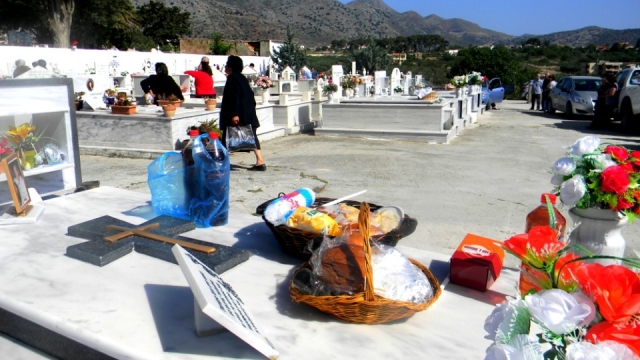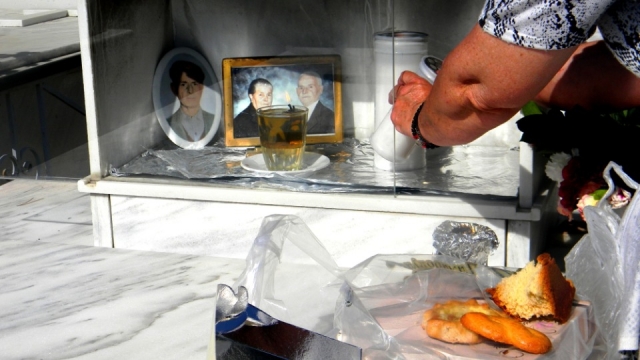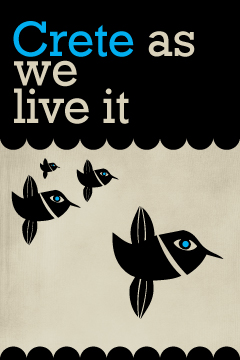It is Easter Monday in Tylissos and from early morning you start seeing people holding taperware and plates, heading towards the village cemetery a few meters outside the settlement. Already from 8 in the morning, dishes with Easter specialties are neatly placed on the graves, candles are lit and the 'silence of the grave' breaks from the sudden mob invasion.
The village priest visits every grave to perform a small (but collective) memorial service and right after the relatives of the dead offer food and wine to the people around, who do the same in return. Kaltsounia (easter pastries), cookies, easter eggs, even lamb and kokoretsi change hands over the tombstones, in a festive atmosphere that beats sorrow.
Macabre? Not really... this is an ancient custom, originating from Minoan times, which survived from generation to generation to our days and adjusted to modern religion, so that today it brings the joyful message of resurrection and the family warmth of the holidays to the dead realtives and friends.
Easter pastries, cookies, easter eggs and even lamb change hands over the tombstones, in a festive atmosphere that beats sorrow
The belief in the immortality of the soul and the need to communicate with our ancestors is (and was) part of most cultures and such 'strange' customs are obviously not exclusive to this small Cretan village. In Greece there is a similar custom in North Greece (Giromeri, Thesprotia), where on Easter Monday inhabitants pay tribute to their dead with music, walking around the graves playing instruments and singing. However, the most famous edition of this custom internationally is probably the phantasmagoric 'Day of the Dead' in Mexico, where offerings are made (food, sweets, loved objects, ect) on the graves of dead relatives and friends - also an ancient tradition from the time of the Aztecs.







